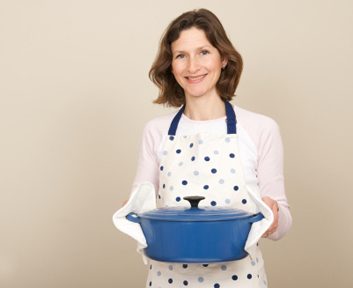
The importance of good cookware
Cast iron cookware is my go-to in both my home and school kitchens. If you like to browse through second-hand stores, antique stores or garage sales, keep your eyes open for used ones. Even if they’re dirty and rusty, they can easily be cleaned up to become beautiful pans once again. Because cast iron isn’t a non-stick surface, you may have to season your pot or pan (some brands are pre-seasoned); this will also help prevent rust. To season your pan, coat it in cooking oil, coconut oil or animal fat (such as bacon grease) and bake it in the oven at 350°F for one hour. You’ll need to season a cast iron pot or pan a few times in the beginning, but over time a non-stick coating will form and you’ll need to season it only occasionally.
A bonus: The iron in these pans will leach into some of the foods cooked in them, upping your iron intake.
Stainless steel pot sets are also a must-have, and are frequently on sale in big-box stores and other large department stores. When buying, be sure to take the pans out of the box to get a sense of how well-made they feel: Are the handles strong and sturdy? Are the pans weighty? A heavy bottom will help with even heat distribution.
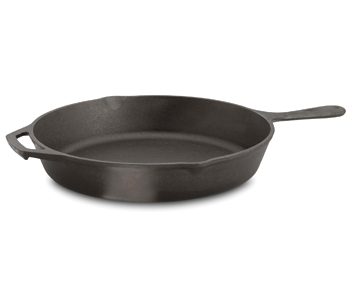
Cast iron skillet
This is the most-used pan in my kitchen. I use mine to make frittatas, paellas and bacon, and for searing meats. It’s versatile and easily goes from stovetop to oven. The key to continued success with a cast iron pan is proper maintenance. Immediately after use, wash with hot water only (no soap; it will strip the seasoning layer), then dry thoroughly and rub the inside with oil. If you take care of your pan, it can be passed on for generations.
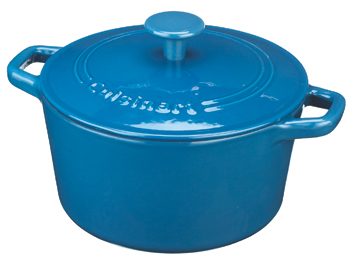
Cast iron Dutch oven
I use a five-quart cast iron Dutch oven for stews, soups and braising on the stovetop or in the oven. It’s the original slow cooker: It has a heavy bottom, high sides and a lid so heat is evenly distributed, allowing for consistent cooking. Mine is uncoated, so it’s also a great pot for cooking on an outdoor fire. Proper maintenance and care-the same as for a cast iron skillet-will keep the pot rust free. If you prefer not to worry about oiling, there are enamelled cast iron Dutch ovens available-such as the Cuisinart casserole dish-that are easy to maintain.
Cuisinart cast iron casserole (canadiantire.ca, three sizes, $100-$200)
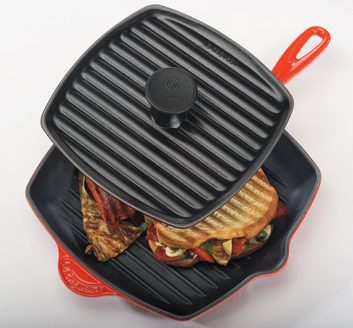
Cast iron porcelain enameled panini press
These are the best for making a variety of sandwiches. The heavy bottom distributes the heat well, and the heavy top easily presses the sandwiches down to cook the filling. A panini press is wonderful for grilling vegetables and also to cook burgers and chicken breasts.
Le Creuset Panini Press and Skillet Grill (lecreuset.ca, $280)
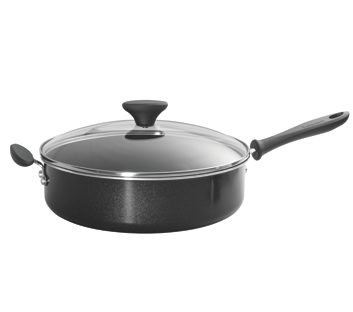
Saute pan
A heavy, flat-bottomed, stainless steel sauté pan is excellent for the preparation of sauces and to sauté meat. The handle is a key component to all pans and pots to ensure a long life, as it has to hold the weight of the ingredients, so make sure you purchase one with strong rivets or screws. There are non-stick options that allow you to use less fat during the cooking process. Maintenance is an important factor to keep your non-stick in great shape; be sure not to use metal utensils when cooking or abrasive scrub brushes when cleaning, as they will damage the surface. There are eco-friendly coatings available now, too.
Bravetti Non-Stick covered 5 qt sauté pan (canadiantire.ca, $70)
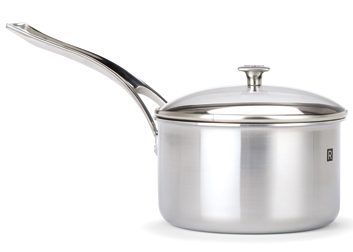
Saucepan
A fully stocked kitchen wouldn’t be complete without at least one two-quart or three-quart saucepan. These are perfect for pasta and soup, and for use as the base of a double boiler (for melting chocolate, for example). Again, a heavy bottom is recommended for even heat distribution and retention, for consistent cooking and to prevent burning.
Ricardo 2 qt Stainless Steel Saucepan (sears.ca, $80)
Related:
• 5 eco-friendly kitchen gadgets
• 8 ways your kitchen can help you lose weight
• 5 healthy gadgets to add to your kitchen
